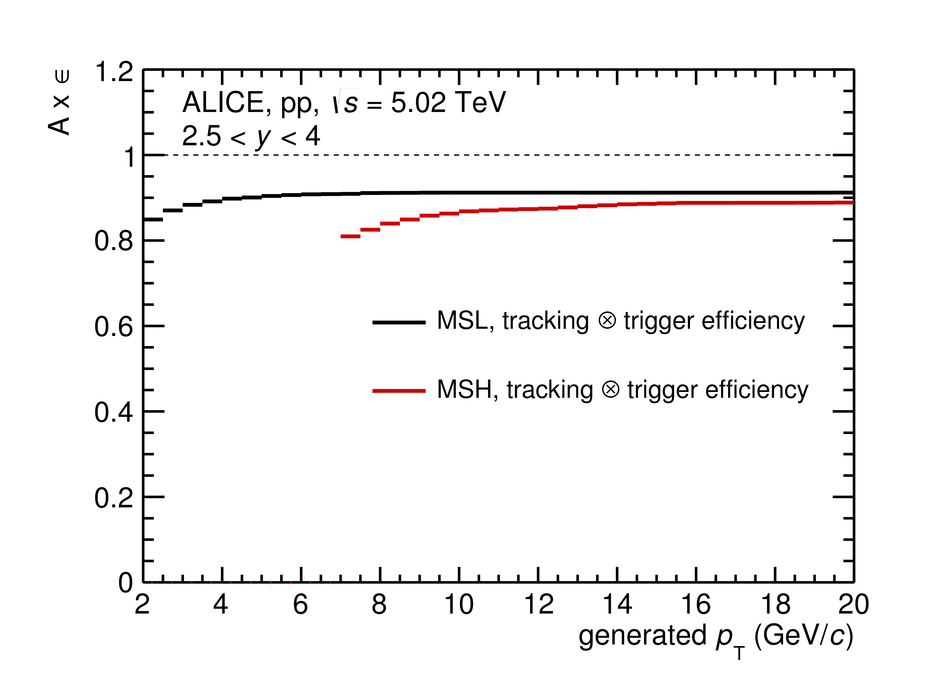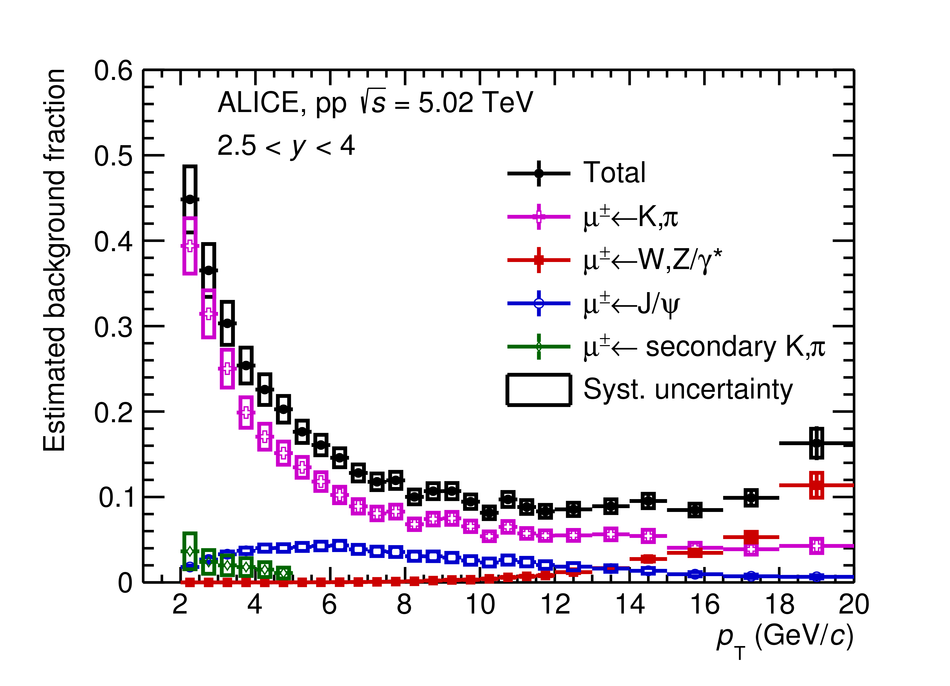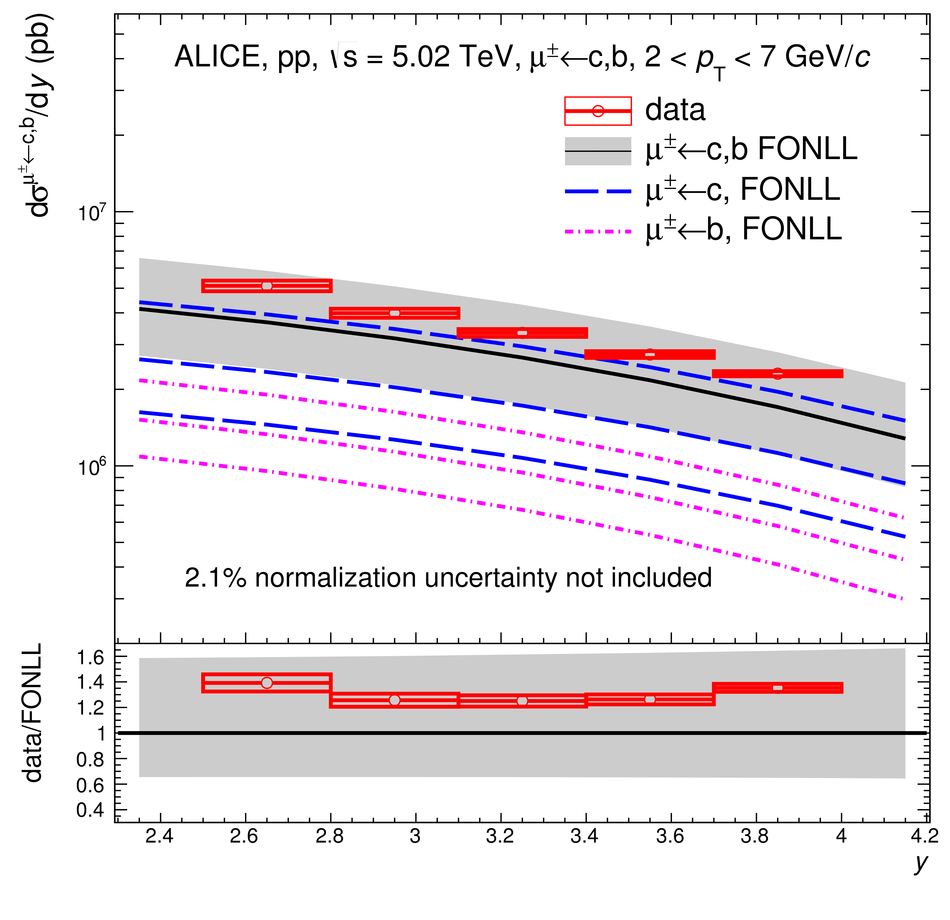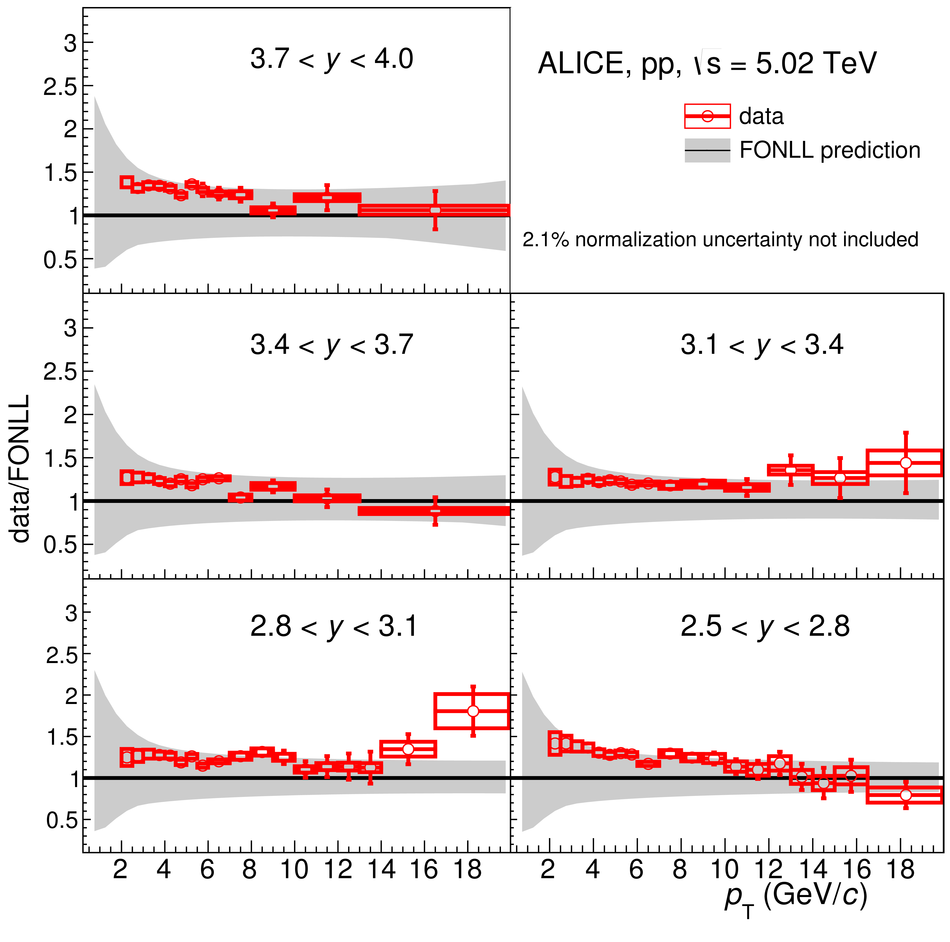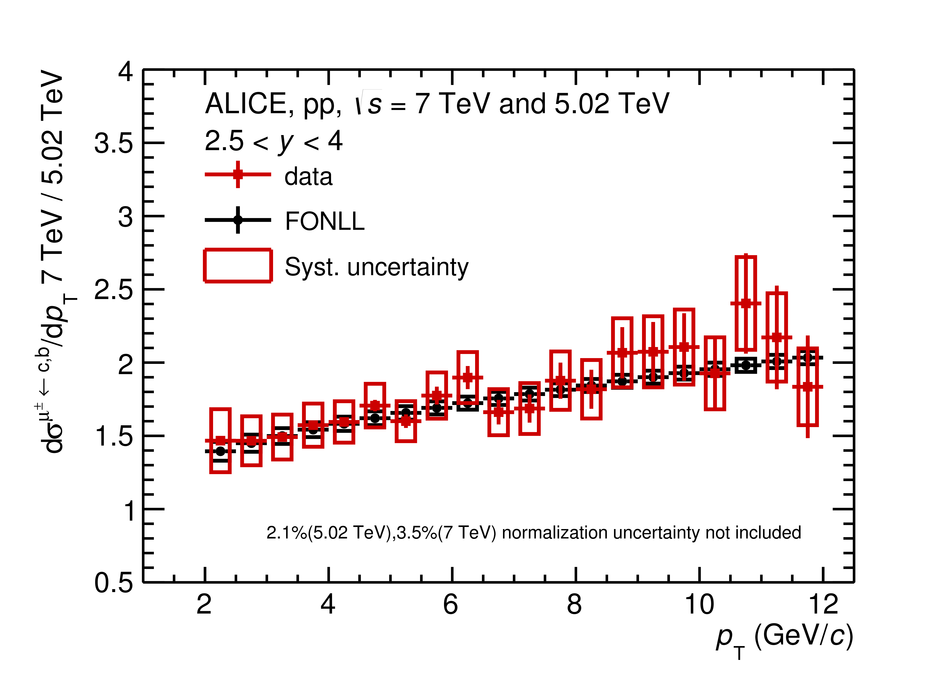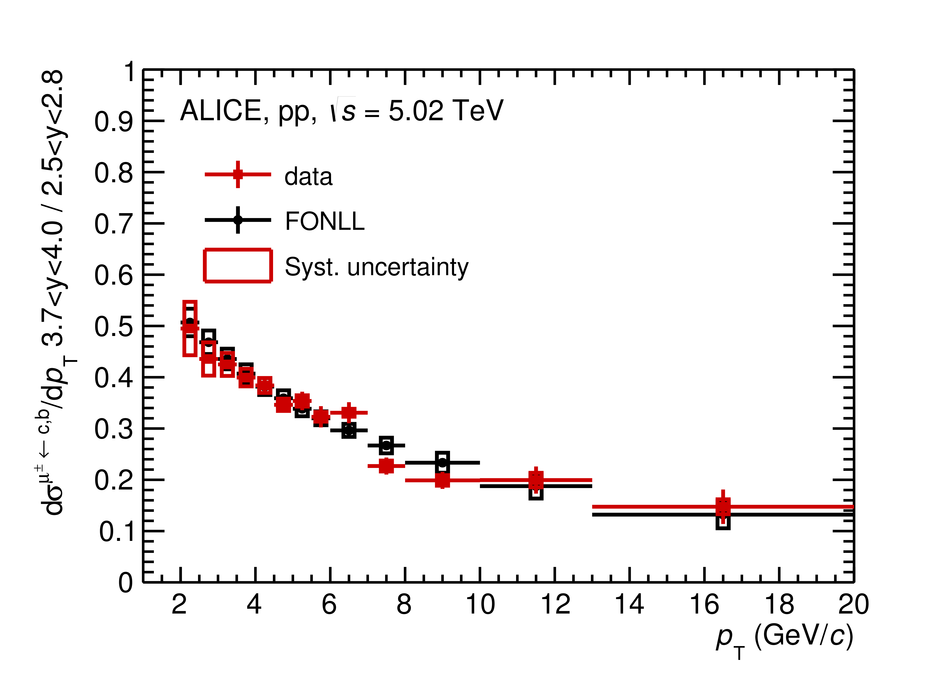Production cross sections of muons from semi-leptonic decays of charm and beauty hadrons were measured at forward rapidity ($2.5<~y<~4$) in proton--proton (pp) collisions at a centre-of-mass energy $\sqrt{s}=5.02$ TeV with the ALICE detector at the CERN LHC. The results were obtained in an extended transverse momentum interval, $2 <~ p_{\rm T} <~ 20$ GeV/$c$, and with an improved precision compared to previous measurements performed in the same rapidity interval at centre-of-mass energies $\sqrt{s}= 2.76$ and 7 TeV. The $p_{\rm T}$- and $y$-differential production cross sections as well as the $p_{\rm T}$-differential production cross section ratios between different centre-of-mass energies and different rapidity intervals are described, within experimental and theoretical uncertainties, by predictions based on perturbative QCD.
JHEP 09 (2019) 008
HEP Data
e-Print: arXiv:1905.07207 | PDF | inSPIRE
CERN-EP-2019-078

